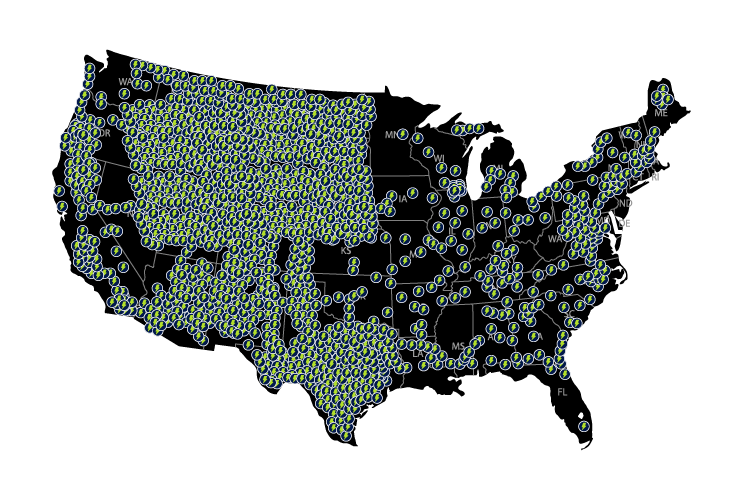Long-term assets, also known as non-current assets or fixed assets, are assets that a company expects to use for more than one year. They can be tangible or intangible, and they play an important role in a company's ability to generate revenue and profits over time.
Examples of Long-Term Assets
Tangible assets:
Land
Buildings
Machinery and equipment
Furniture and fixtures
Vehicles
Intangible assets:
Patents
Trademarks
Copyrights
Franchises
Goodwill
Software
The Best Free Investment You’ll Ever Make
Join Wealth Daily today for FREE. We’ll keep you on top of all the hottest investment ideas before they
hit Wall Street. Become a member today, and get our latest free report: “Why You Need to Fire Your Money
Manager.”
It contains full details on why money managers are overpaid and provides you with
tools for growing your wealth.On your own terms. No fees, no comission.
After getting your report, you’ll begin receiving the
Wealth Daily e-Letter, delivered to your inbox
daily.
Importance of Long-Term Assets
Long-term assets are important to a company for many reasons. First, they allow a company to operate and generate revenue. For example, a manufacturing company needs to have machinery and equipment to produce its products. Second, long-term assets can provide a company with a competitive advantage. For example, a company with a strong brand identity may be able to charge higher prices for its products. Third, long-term assets can increase the value of a company. For example, a company with a large portfolio of real estate may be more attractive to potential buyers. Management of Long-Term Assets
Companies need to carefully manage their long-term assets in order to maximize their value and minimize their risks. This includes:
Investing in the right assets:
Companies need to invest in long-term assets that will help them achieve their strategic goals. For example, a company that is expanding into a new market may need to invest in new manufacturing facilities.
Maintaining assets properly:
Companies need to properly maintain their long-term assets in order to extend their useful life. This includes regular maintenance and repairs. Companies should regularly check their machinery and equipment for problems. The company should also schedule regular repairs and maintenance to keep its assets in good working order.
Updating assets as needed:
As technology advances, companies may need to update their assets in order to stay competitive. For example, a company may need to invest in new software or machinery. Companies should regularly review their long-term assets and assess whether they need to be updated.
Disposing of assets when they are no longer needed:
Companies must regularly check their long-term assets and get rid of any that are no longer useful or profitable. For example, if a company is closing down one of its factories, it will need to dispose of the machinery and equipment in that factory. Companies can dispose of assets by selling them, scrapping them, or donating them.
URGENT: Look at This Map of America…

There’s a silent invasion happening.
Those black dots you see are electric vehicle charging stations — but they’re not like any chargers you’ve seen before.
Because every one of those units could soon be putting money directly into your bank account…
Twenty-four hours a day, seven days a week.
Click here to discover what may be the biggest income opportunity of your lifetime.
Accounting For Long-Term Assets
Long-term assets are recorded on the balance sheet of a company's financial statements. They are typically recorded at the price at which they were purchased, but this may not reflect the current value of the asset. For example, if a company buys a machine for $10,000, it will record the asset on its balance sheet at $10,000. However, over time, the machine will wear down and depreciate in value. The company will then adjust the value of the asset on its balance sheet to reflect its current worth.
Depreciation
Depreciation is the process of allocating the cost of a long-term asset over its useful life. This is done because the asset is expected to lose value over time. Companies use many different depreciation methods, but the most common one is the straight-line method. Under the straight-line method, the cost of the asset is divided evenly over its useful life.
Amortization
Amortization is the process of allocating the cost of an intangible asset over its useful life. We amortize intangible assets over a shorter period of time than tangible assets because they are also expected to lose value over time.
Conclusion
In conclusion, long-term assets are an important part of a company's financial health. By carefully managing their assets, companies can maximize their value and minimize their risks.
Additional Considerations
In addition to the above, companies should also consider the following when managing their long-term assets:
Risk management: Companies should identify and assess the risks associated with their long-term assets. These risks may include physical damage, theft, and obsolescence. Companies should then implement appropriate risk management strategies to mitigate these risks.
Insurance: Companies should buy insurance to protect their long-term assets from risks.
Tax planning: Companies should consider the tax implications of their long-term assets. For example, companies may be able to deduct depreciation and amortization expenses on their tax returns.
By considering all the above factors, companies can make a plan to manage their long-term assets that will help them reach their goals. To learn more about long-term assets or other investment opportunities, sign up for our free Wealth Daily newsletter today. 
